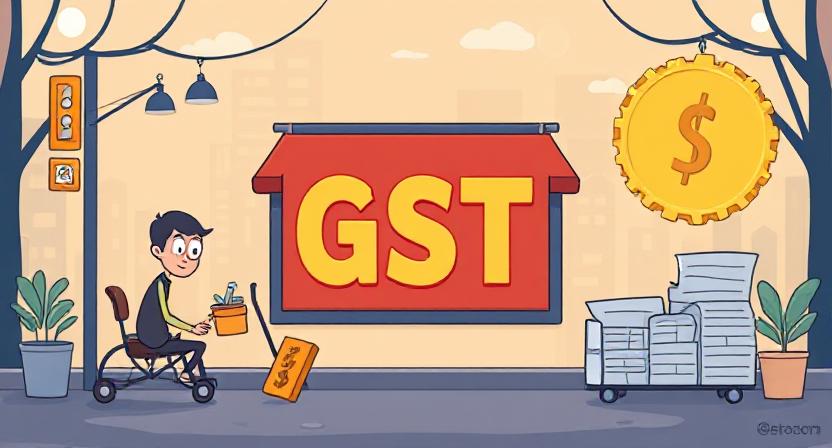
Starting tomorrow, September 22, India officially rolls out GST 2.0, a revised tax regime that will bring significant changes to household budgets. The new structure is designed to make essential goods and services more affordable while increasing the tax burden on luxury and so-called “sinful” products such as alcohol, cigarettes, and high-end vehicles.
For millions of families, this means savings on groceries, dairy products, and home appliances, while indulgences like imported liquor, aerated drinks, and premium motorcycles will get more expensive. The update aims to strike a balance between easing the burden on common households and discouraging non-essential consumption.
Relief for the Indian Kitchen
The first wave of relief arrives at the kitchen table. Amul, India’s largest dairy brand, has announced price cuts across more than 400 items, ranging from butter and paneer to chocolates, frozen snacks, and ghee. Similarly, Madhya Pradesh households will see a drop of over ₹40 on popular Sachi ghee. In Karnataka, state-owned brand Nandini has slashed rates on cheese, milk products, and butter. Everyday essentials such as packaged atta, soaps, and edible oils are also shifting to lower GST slabs, ensuring that basic grocery shopping becomes lighter on the wallet.
Even train travelers will feel the difference, as the price of Rail Neer bottled water sold onboard will now be cheaper under the new regime.
Affordable Appliances and Electronics
The GST revision also benefits households looking to upgrade appliances and electronics. Dishwashers and air conditioners will become cheaper by ₹4,500–₹8,000, while projectors, monitors, and televisions will now attract only 18% GST, down from higher rates earlier.
Budget-conscious shoppers will also welcome reduced prices on entry-level refrigerators and smartphones priced under ₹25,000. With the festive season around the corner, the timing of these reductions could not be better.
Cars and Bikes See Price Drops
Automobile buyers stand to gain as well. Several popular Maruti Suzuki models, including the Alto, Swift, Baleno, and Brezza, will now be cheaper by up to ₹1.2 lakh.
Two-wheeler buyers will also see benefits. Suzuki has cut prices on bikes and scooters under 350cc, with the Gixxer SF-250 and other mid-range motorcycles becoming more affordable. Builders and artisans will find relief too, as raw materials like marble, granite, lime bricks, and handicrafts are now placed under lower tax categories.
Healthcare and Education Essentials Exempted
Children’s education and healthcare needs are also safeguarded. Items like exercise books, pencils, notebooks, and erasers now fall under the 0% GST slab. Health and life Insurance Premiums too have been exempted, a change that will reduce recurring household expenses.
Though the savings per item might appear small, collectively they will significantly ease financial pressure on middle-class households across India.
What Gets Costlier Under GST 2.0
While basic goods get cheaper, the government has applied steep hikes on luxury and harmful products. Cigarettes, gutkha, chewing tobacco, and pan masala now fall under a 40% GST slab. Similarly, aerated drinks and sugary soft beverages will see noticeable price hikes.
Large-capacity motorcycles such as Royal Enfield’s 650cc series and the Himalayan are now classified under the “demerit” category, making them costlier. Luxury SUVs, imported watches, high-end liquor, and other premium indulgences will also be heavily taxed.
Check MRPs Carefully
As the new GST rates come into force, consumers should be vigilant about Maximum Retail Prices (MRPs). Products manufactured before September 22 may display both old and revised MRPs. For example, a biscuit pack earlier priced at ₹50 may now show ₹48, but retailers could still charge the old price.
The government has clarified that companies can update MRPs using stickers, stamps, or digital reprints, and older packaging can continue in circulation until March 31, 2026, or until stocks run out. However, shoppers are advised to double-check bills to ensure the benefits of GST 2.0 are actually passed on.
With GST 2.0 taking effect, India enters a new phase of consumer pricing — one that promises lower costs for essentials and higher taxes on luxury goods. Families are set to enjoy meaningful savings, while the government reinforces its intent to make the tax system both fair and growth-oriented.
For breaking news and live news updates, like us on Facebook or follow us on Twitter and Instagram. Read more on Latest Business on thefoxdaily.com.




COMMENTS 0